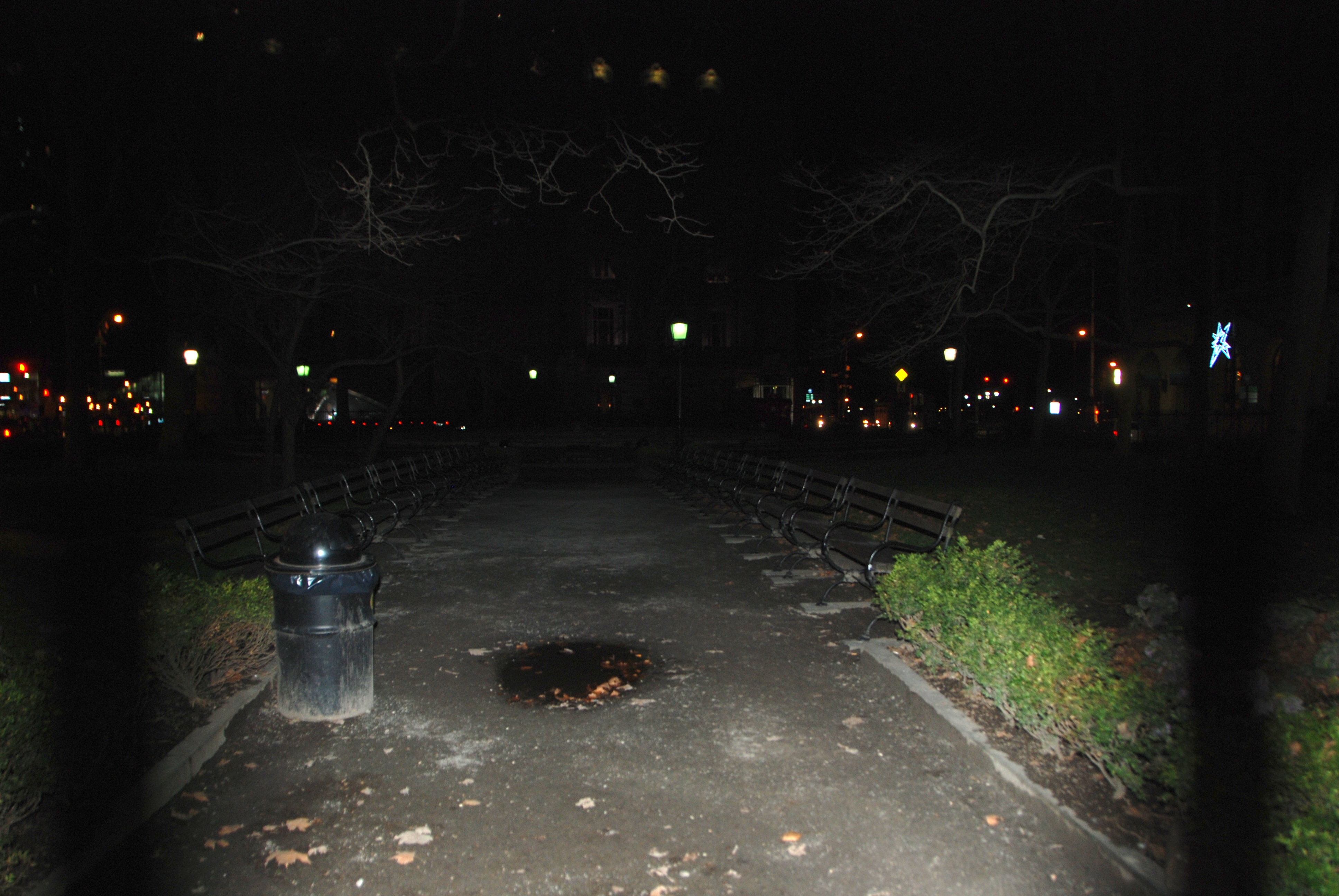
The decorative light fixtures installed at Bowling Green by the Parks Dept. don’t provide enough light, according to park boosters.
BY DUSICA SUE MALESEVIC |
New York City’s oldest park is leaving residents and tourists in the dark, says an advocate trying to get the city to see the light.
Arthur Piccolo, head of the Bowling Green Association, made the case to Community Board 1’s Financial District Committee for illuminating Downtown’s historic plaza at its on Jan. 6 meeting.
“Bowling Green is where the city was founded. It’s where more American history took place in — certainly in New York City — than anywhere else,” Piccolo told the committee. “A resolution simply recommending that the city do more and others do more would certainly be helpful to me and my continuing campaign to get us better lighting.”
Bowling Green was established as a public park in 1733 with a mandate to add to the city’s “beauty and ornament,” and more than 250 years later it acquired arguably Downtown’s most iconic ornament — Arturo Di Modica’s “Charging Bull” — the 3.5-ton bronze sculpture that has become synonymous with Wall Street and which, Piccolo pointed out, visitors flock to — even into the dark of night.
“They’re literally in almost complete blackness,” he said.
Piccolo also showed the committee photos of the recent Chanukah ceremonies at the park, which — except for the menorah — were very dark.
The park used to have prominent lighting, according to Piccolo — until 2003.
“What happened is there was 9/11 money for renovation of parks,” Piccolo said. “The Parks Department decided to take out these magnificent, standard park lights that are meant to give illumination and they replaced them with some ornamental lights, which were just a waste of money. They give off no light.”
The Parks Department did not respond to questions about the 9/11 funding and the lighting change, but stipulated that Bowling Green Park is lit by ten lights.
But it’s not only the lights within the park that have gone dim, according to Piccolo. At each end of the U.S. Custom House on the south edge of Bowling Green, there are two powerful floodlights — but they no longer work.
Piccolo said he had been lobbying the Downtown Alliance, which manages the business improvement district for Lower Manhattan, to restore the lights.
“I’ve been trying since August to simply get the Alliance to put in bulbs in there,” he said.
The Downtown Alliance said it is in the process of restoring the lighting at the façade of the building, which hosts a branch of the National Museum of the American Indian, and also provides additional lighting around Bowling Green.
“The Alliance does recognize the importance of this issue, which is why we have installed and maintain lighting around the perimeter of the park,” said spokeswoman Maria C. Alvarado-Behl. “Beyond that, we look forward to being a part of conversations and efforts with the city on Bowling Green’s lighting.”
Committee members agreed that more lighting was needed, but suggested that the focus of their resolution be based on safety concerns.
“What’s bothering me is that the majority of this is about all the historical significance the park has,” said Pat Moore, a committee member. “We want lighting because of safety issues — make that the prominent emphasis.”
Committee chairman Ro Sheffe agreed that safety, rather that history, would be a better angle for convincing the Dept. of Transportation, which handles the allocation of streetlights.
“That’s what going to persuade D.O.T.,” he said. “History is important to mention, but it’s not a primary concern.”
The D.O.T. did answer questions about estimated costs of lighting the park or what a single streetlight would cost. The agency would not even acknowledge that additional lighting had been requested.
The Park Dept. spokeswoman also said there were no complaints from the community board about lighting at the park. But she said that if and when a resolution is written and presented, the department would certainly take it into consideration.
The committee unanimously supported putting a resolution calling for more lighting before the full board at CB1’s next meeting.
CB1 is in the middle of the budget process for fiscal year 2017, so there will be an opportunity to bring this issue up during upcoming consultations with city agencies such as the D.O.T., said Michael Levine, the board’s land use consultant.


































